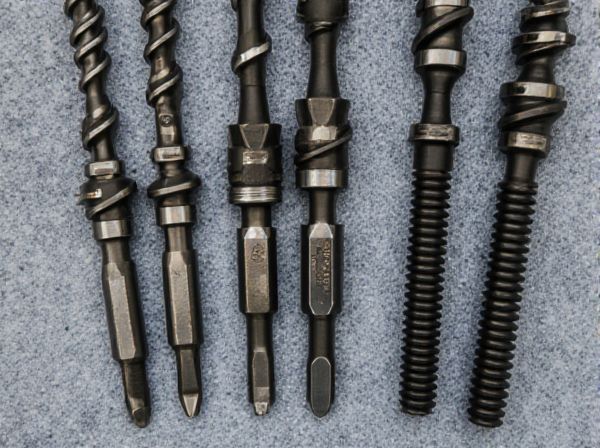
Photo illustration: Mild Camshaft vs Performance Camshaft
A mild camshaft offers smoother engine operation and better fuel efficiency, making it ideal for daily driving and preserving engine longevity. Performance camshafts enhance power and torque by optimizing valve timing for higher RPMs, which benefits racing or high-performance vehicles. Your choice depends on whether you prioritize everyday reliability or maximum engine output.
Table of Comparison
| Feature | Mild Camshaft | Performance Camshaft |
|---|---|---|
| Purpose | Daily driving, fuel efficiency | Maximized power, racing applications |
| Lift | Lower lift (0.300 - 0.400 inches) | Higher lift (0.400 - 0.600+ inches) |
| Duration | Shorter duration (200deg - 220deg) | Longer duration (230deg - 280deg) |
| Valve Timing | Conservative, optimized for emissions | Aggressive, optimized for top-end power |
| Idle Quality | Smooth and stable | Rougher, louder idle |
| Fuel Efficiency | High | Reduced |
| Power Output | Moderate increase over stock | Significant horsepower and torque gains |
| Application | Street vehicles, mild upgrades | Track cars, performance builds |
Introduction to Camshafts
A camshaft controls the timing and lift of engine valves, crucial for optimizing air-fuel mixture intake and exhaust gas expulsion. Mild camshafts offer moderate valve lift and duration, favoring smooth idling and fuel efficiency suitable for everyday driving. Performance camshafts feature higher lift and longer duration, increasing airflow at high RPMs to boost horsepower and engine responsiveness.
What is a Mild Camshaft?
A mild camshaft features subtle lift and duration specifications designed to improve engine efficiency and drivability without significantly altering stock characteristics. It enhances torque and fuel economy by optimizing valve timing for everyday driving conditions. Compared to performance camshafts, mild cams maintain OEM-like idle quality and emissions compliance while providing moderate power gains.
What is a Performance Camshaft?
A performance camshaft is designed to enhance engine power by altering valve timing, lift, and duration to optimize airflow and fuel mixture. Unlike a mild camshaft, which prioritizes smooth operation and fuel efficiency, a performance camshaft improves horsepower and torque at higher RPMs, making it ideal for racing and high-performance applications. Precision engineering of the cam profile directly influences engine responsiveness and maximum output.
Key Differences: Mild vs Performance Camshafts
Mild camshafts offer reduced valve lift and duration, optimizing fuel efficiency and smooth operation for daily driving, while performance camshafts feature increased lift and duration to enhance airflow, boosting horsepower and torque for high-performance engines. The key difference lies in valve timing; mild cams prioritize drivability and lower RPM power, whereas performance cams extend power delivery to higher RPM ranges, supporting aggressive acceleration. Material construction and profile design also vary, with performance cams often utilizing hardened components to withstand increased stress under racing conditions.
Impact on Engine Power and Torque
Mild camshafts enhance engine power and torque by providing smoother valve timing with moderate lift and duration, optimizing efficiency for daily driving without sacrificing reliability. Performance camshafts significantly increase power and torque by allowing higher valve lift and longer duration, improving air-fuel mixture flow and combustion at high RPMs. The trade-off for performance cams includes reduced low-end torque and drivability, making them ideal for racing or high-performance applications.
Fuel Efficiency Comparison
Mild camshafts typically offer better fuel efficiency by optimizing valve timing for smoother combustion and lower RPM operation, reducing fuel consumption during everyday driving. Performance camshafts prioritize increased horsepower and torque, often resulting in less efficient fuel use due to aggressive valve timing and higher engine speeds. Vehicles equipped with mild camshafts generally achieve improved miles per gallon (MPG) compared to those with performance camshafts, especially in city and highway driving conditions.
Driveability: Street vs Track
Mild camshafts enhance driveability with smoother idle, lower RPM torque, and better fuel efficiency, making them ideal for daily street driving. Performance camshafts optimize high RPM power and aggressive valve timing, sacrificing low-end torque and idle smoothness, which suits track or racing conditions. Street driving benefits from mild camshafts' ease of use and responsiveness at regular speeds, while performance camshafts deliver peak power under demanding track environments.
Installation Considerations
Mild camshaft installation often requires minimal modifications to existing engine components, making it suitable for stock or lightly upgraded setups. Performance camshafts may necessitate upgrading valve springs, timing components, and possibly modifying the fuel system to accommodate increased airflow and lift. Proper installation timing and ensuring compatible engine tuning are critical to optimize power gains and maintain engine reliability with performance cams.
Cost and Maintenance Factors
Mild camshafts typically cost less and require minimal maintenance, making them ideal for daily drivers seeking reliability and fuel efficiency. Performance camshafts come with higher upfront costs and often necessitate frequent tuning and valve adjustments to maintain optimal engine performance. The increased wear on components with performance camshafts also leads to more frequent and costly maintenance intervals compared to mild camshafts.
Choosing the Right Camshaft for Your Needs
Selecting the right camshaft depends on your vehicle's intended use and performance goals; a mild camshaft offers smoother idle, better fuel efficiency, and improved drivability for daily driving. Performance camshafts provide increased valve lift and duration, resulting in higher horsepower and torque at higher RPMs, ideal for racing or aggressive driving. Matching camshaft specs with engine modifications and driving conditions ensures optimal power delivery and engine longevity.
 caratoz.com
caratoz.com